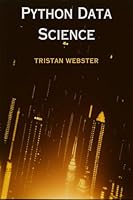
The Foundations of Mathematics, 2nd Edition
- Length: 432 pages
- Edition: 2
- Language: English
- Publisher: Oxford University Press
- Publication Date: 2015-05-01
- ISBN-10: 0198706448
- ISBN-13: 9780198706441
- Sales Rank: #224826 (See Top 100 Books)
The transition from school mathematics to university mathematics is seldom straightforward. Students are faced with a disconnect between the algorithmic and informal attitude to mathematics at school, versus a new emphasis on proof, based on logic, and a more abstract development of general concepts, based on set theory.
The authors have many years’ experience of the potential difficulties involved, through teaching first-year undergraduates and researching the ways in which students and mathematicians think. The book explains the motivation behind abstract foundational material based on students’ experiences of school mathematics, and explicitly suggests ways students can make sense of formal ideas.
This second edition takes a significant step forward by not only making the transition from intuitive to formal methods, but also by reversing the process- using structure theorems to prove that formal systems have visual and symbolic interpretations that enhance mathematical thinking. This is exemplified by a new chapter on the theory of groups.
While the first edition extended counting to infinite cardinal numbers, the second also extends the real numbers rigorously to larger ordered fields. This links intuitive ideas in calculus to the formal epsilon-delta methods of analysis. The approach here is not the conventional one of ‘nonstandard analysis’, but a simpler, graphically based treatment which makes the notion of an infinitesimal natural and straightforward.
This allows a further vision of the wider world of mathematical thinking in which formal definitions and proof lead to amazing new ways of defining, proving, visualising and symbolising mathematics beyond previous expectations.
Table of Contents
Part I The Intuitive Background
Chapter 1 Mathematical Thinking
Chapter 2 Number Systems
Part II The Beginnings of Formalisation
Chapter 3 Sets
Chapter 4 Relations
Chapter 5 Functions
Chapter 6 Mathematical Logic
Chapter 7 Mathematical Proof
Part III The Development of Axiomatic Systems
Chapter 8 Natural Numbers and Proof by Induction
Chapter 9 Real Numbers
Chapter 10 Real Numbers as a Complete Ordered Field
Chapter 11 Complex Numbers and Beyond
Part IV Using Axiomatic Systems
Chapter 12 Axiomatic Systems, Structure Theorems, and Flexible Thinking
Chapter 13 Permutations and Groups
Chapter 14 Cardinal Numbers
Chapter 15 Infinitesimals
Part V Strengthening the Foundations
Chapter 16 Axioms for Set Theory
Appendix How to Read Proofs: The ‘Self-Explanation’ Strategy







